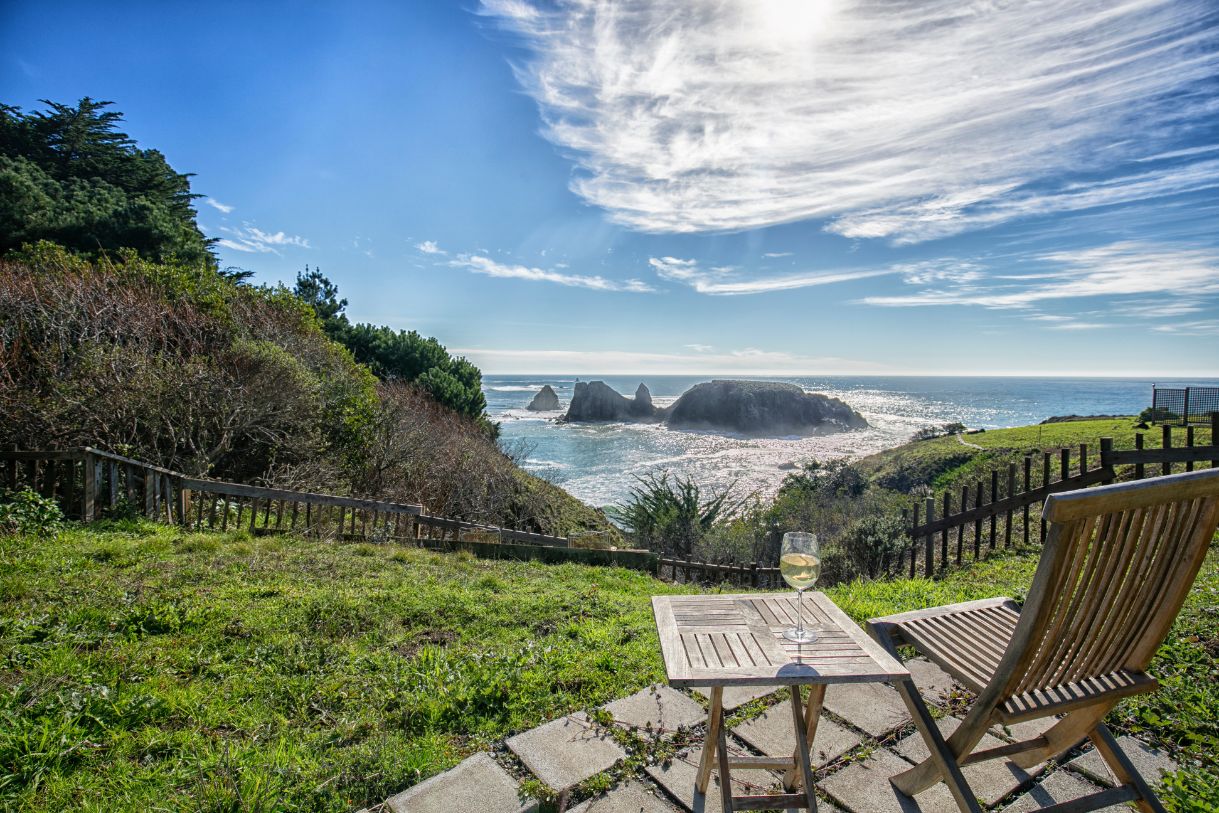If you’re anything like the team here at Winetraveler, you love wine, food, Europe, and a trip to the beach. Believe it or not, it is possible to combine all your favorite things into one vacation.
You may think of rolling hills and autumn weather in destinations like La Rioja, Spain, Tuscany, Italy or Bordeaux, France, when you imagine wine tasting in Europe. But Europe has many incredible wine regions where you can dive into clear waters by morning and sip wine in a vineyard that very same afternoon. Here are our favorite wine regions in Europe by the sea and what makes them special.
We want to be clear and let you know that this guide focuses on some of the best wine regions in Europe that are literally, by the sea. Of course, there are other wine regions in Europe that are fantastic for a variety of reasons, but these are for wine enthusiasts who love to sip with an ocean view.
Best Seaside Wine Regions in Europe to Visit This Year
Lisbon, Portugal

Greater Lisbon has it all: a vibrant cityscape with a number of cultural and tourist attractions, a coastline with white sandy beaches, and nine different wine sub-regions. One of the best spots to enjoy sand and wine is Colares, where the grapevines actually grow directly out of the sand. Here, you can hit the Praia do Guincho sandy beach or the crashing sea in Azenhas do Mar, visit the Sintra castle and national park, and sip vintage varieties made from the area’s extra acidic grape, ramisco.
Setúbal, an underrated Portuguese wine region in its own right, is also within a short drive of Lisbon, which we highly recommend visiting to escape crowds of tourists and to experience Portuguese daily life in a more under-the-radar wine destination in Europe.
RELATED: The Best Authentic Things To Do in Lisbon Portugal
Paros, Greece
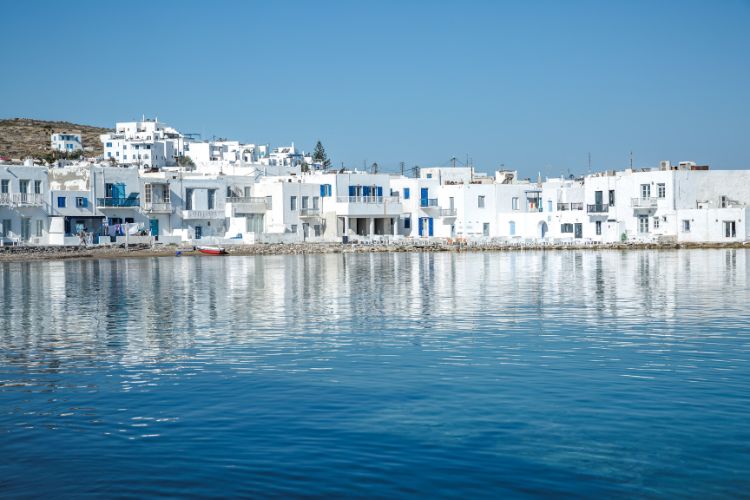
Paros is the ultimate Greek Island for foodies and winos — there are over 7,000 acres of vineyards to visit. In fact, Paros has its very own PDO (Protected Designation of Origin) for its grapes Monemvasia and Mandilaria. Spend the morning at the gorgeous Kolimbithres beach, known for its large rocks that form tranquil coves for swimming. Then, taste and tour at the nearby Asteras Paros Winery.
RELATED: Top Underrated Greek Islands You Must Visit
Santorini, Greece
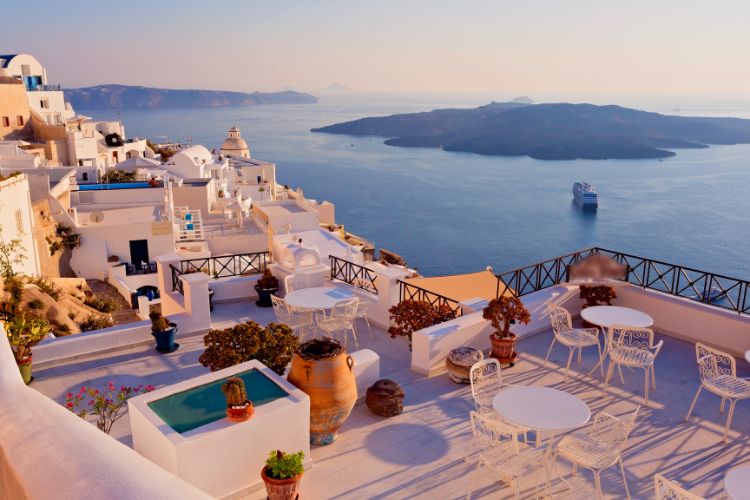
The volcanic island of Santorini, located in the southern Cyclades islands in the Aegean Sea, is renowned for its striking natural beauty, dramatic cliffs, and iconic blue-domed churches. The island’s unique geological history, formed by a series of volcanic eruptions, has given rise to its distinctive terroir, which greatly influences the character of Santorini’s wines.
The most celebrated grape variety in Santorini is Assyrtiko, a white grape indigenous to the island. The grape’s ability to thrive in the island’s volcanic soils, which are rich in minerals and poor in organic matter, is a testament to its resilience and adaptability. The volcanic soils, combined with Santorini’s arid climate, create a challenging environment for viticulture, but the resulting wines are truly exceptional.
RELATED: The Best Greek Islands to Visit This Year
Assyrtiko wines from Santorini are known for their crisp acidity, pronounced minerality, and citrus-driven flavors. The wines often exhibit notes of lemon, green apple, and flint, with an underlying salinity that reflects the island’s maritime influence. As Assyrtiko wines age, they can develop more complex flavors, such as honey, dried fruit, and nuts, adding depth and richness to the wine’s profile.
In addition to Assyrtiko, Santorini is also home to other indigenous grape varieties, such as Aidani and Athiri, which are often blended with Assyrtiko to produce elegant, aromatic white wines. The island is also famous for its sweet dessert wines, known as Vinsanto, which are made from sun-dried grapes, mainly Assyrtiko, and aged in oak barrels for several years.
Santorini’s vineyards are characterized by their distinctive “kouloura” or “basket” training system, where the vines are woven into circular shapes to protect the grapes from the island’s strong winds and harsh sun. This ancient pruning technique also helps to conserve precious moisture in the arid environment.
Corsica, France
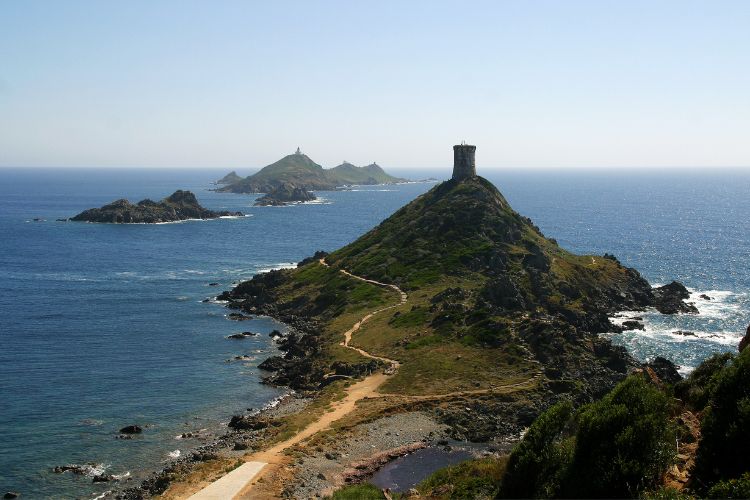
Often referred to as the “Island of Beauty,” Corsica is a Mediterranean island situated southeast of mainland France. It is famous for its breathtaking landscapes, which include rugged mountains, lush forests, and pristine beaches along its stunning coastline. The island’s unique geographical location and diverse terroir have resulted in a wine region with a rich history and distinctive character.
The Corsican wine region covers nine appellations d’origine contrôlée (AOCs), which are spread across the island, offering a wide range of microclimates and soil types. Corsica’s winemaking history dates back to the Phocaean Greeks, who introduced viticulture to the island around 570 BCE. Over the centuries, Corsican wines have evolved, incorporating both traditional and modern winemaking techniques.
Corsican wines are known for their diverse grape varieties, which include both indigenous and international varietals. Among the native grapes, Nielluccio, Sciacarello, and Vermentino are the most prominent.
Lanzarote, Spain

It’s no secret we love the Canary Islands at Winetraveler. One of our favorites for surfing, art, and wine is Lanzarote. Here, you can sample volcanic wine at wineries such as Rubicon and La Geria. Not only can you sample the wine, but you can tour these very special vineyards and learn about the cultivation methods, which include encircling the vines with volcanic stones. Later, hit the waves at Famara Beach, one of the best for surfing on the island.
RELATED: Visit Spain’s Canary Islands: Travel Resources and Logistics
Dalmatia, Croatia

Who wouldn’t want to sip wine, hit the beach, and visit a famous medieval city like Dubrovnik? You can do it all in the Dalmatia region of Croatia. Start with a visit to Dubrovnik, then relax in the sun at the nearby Banje Beach, which offers epic views of the walled city. Then, consider a sunset wine tasting visit to a winery along the Peljesac Peninsula such as Grgic.
There are also unique wine experiences you can encounter in Croatia, like scuba diving for a bottle of wine and then drinking it on the beach.
Malta

Situated in the heart of the Mediterranean Sea, the archipelago of Malta is composed of three main islands: Malta, Gozo, and Comino. Known for its rich history, stunning beaches, and crystal-clear waters, Malta is also an emerging wine destination that offers an idyllic seaside European wine region experience for travelers.
Though the Maltese wine industry is relatively small compared to other European countries, it has been making significant strides in recent years. The island’s unique terroir, characterized by limestone soils and a Mediterranean climate with hot, dry summers and mild winters, provides an excellent environment for grape cultivation. The maritime influence from the surrounding sea helps to moderate temperatures and contributes to the distinct character of Maltese wines.
Maltese wines are primarily produced from a mix of indigenous and international grape varieties. The two key local grapes are Gellewza, a red variety, and Girgentina, a white variety. These grapes are often blended with international varieties, such as Cabernet Sauvignon, Merlot, Chardonnay, and Syrah, to create wines with unique profiles and flavors.
Noto, Sicily
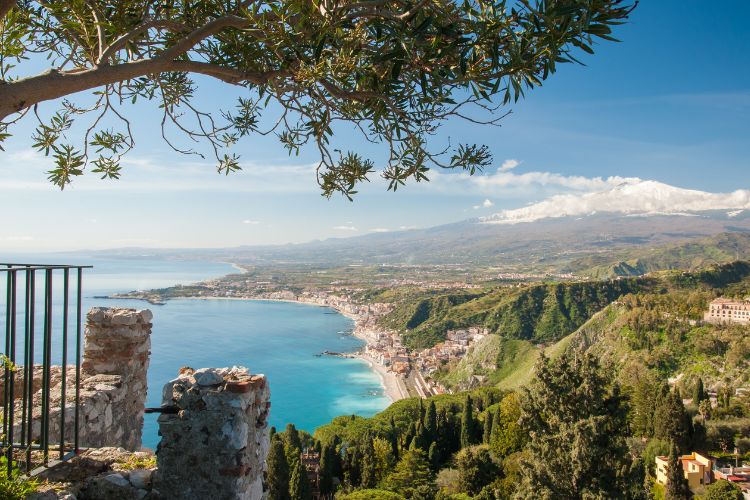
The whole island of Sicily is an adventure waiting to happen, but the Val di Noto is one of the most exceptional spots to visit on the island. Explore the hilltop villages such as Noto, Modica, and Ragusa. Then, suntan on beaches like the protected strip of sand at the Calamosche Beach, located in a natural park. Then, wine taste at the famous Planeta Buonivini, where you can sip on wines like D.O.C. Santa Cecilia, Moscato di Noto, and Passito di Noto. If you’re considering visiting, be sure to schedule any of these private wine tours of Sicily with a local to fully understand the breadth of wine culture here.
RELATED: 7 Satisfying Reasons To Visit Sicily Italy
Sardinia, Italy
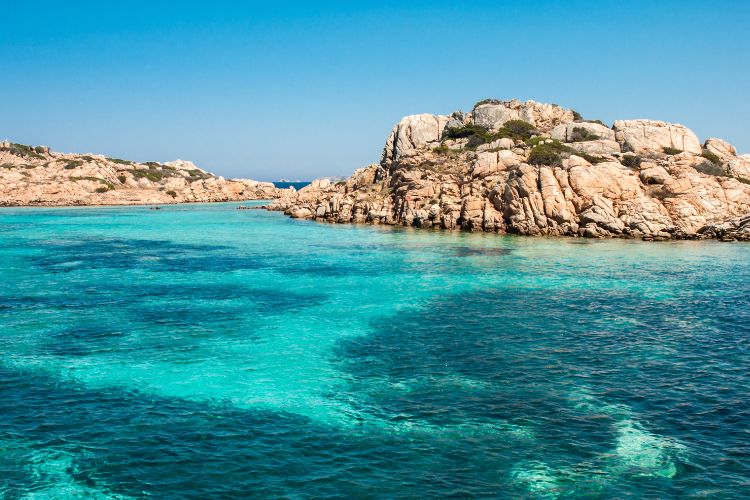
Sardinia, the second-largest island in the Mediterranean Sea, is located southwest of the Italian Peninsula and is characterized by its diverse landscapes, rich history, and vibrant cultural heritage. Its stunning coastline, picturesque villages, and delectable cuisine make it a must-visit destination for wine enthusiasts.
Sardinia’s wine production is centered around the island’s native grape varieties, which have been cultivated for centuries and adapted well to the local terroir. The two most famous grape varieties are Cannonau (also known as Grenache) and Vermentino, which produce high-quality red and white wines, respectively.
Cannonau is Sardinia’s flagship red grape variety, producing deeply-colored, full-bodied wines with flavors of red fruits, spices, and herbs. These wines are often aged in oak, which imparts additional complexity and structure. The wines made from Cannonau are believed to have potential health benefits, as they are high in polyphenols and antioxidants, which have been linked to longevity.
Vermentino, the primary white grape variety in Sardinia, thrives in the island’s coastal regions, where the Mediterranean influence helps to preserve its acidity and aromatic profile. Sardinian Vermentino wines are characterized by their refreshing, crisp flavors of citrus, green apple, and floral notes, making them an excellent pairing for the island’s seafood and local dishes.
Apart from Cannonau and Vermentino, Sardinia is home to several other indigenous grape varieties, such as Carignano, Nuragus, and Monica, which contribute to the island’s diverse wine production.
Sardinia’s unique combination of natural beauty, distinctive wines, and delicious cuisine makes it an ideal wine region for travelers to explore. Visitors can indulge in wine tastings at local wineries, participate in vineyard tours, and savor traditional Sardinian dishes, all while enjoying the stunning coastal views and warm Mediterranean climate. The island’s rich history, archaeological sites, and vibrant culture further enhance the wine travel experience, making Sardinia a truly unforgettable destination for wine lovers.
Côtes de Provence, France

Situated along the Mediterranean coast in southeastern France, the Côtes de Provence wine region is an enchanting area characterized by its charming villages, picturesque landscapes, and diverse terroir. The region is particularly famous for its rosé wines, which account for nearly 90% of its production. The Côtes de Provence vineyards stretch from the coastline to the inland hills, covering a vast area that offers a wide range of microclimates and soil types.
RECOMMENDED: Book One of These Luxury Hotels in Provence for Wine Tasting
The region’s sunny climate, marked by warm summers and mild winters, along with the maritime influence from the Mediterranean Sea, create ideal conditions for grape cultivation. The iconic Mistral wind, which sweeps through the area, helps to keep the vines healthy by reducing the risk of fungal diseases and concentrating flavors in the grapes.
The Côtes de Provence wine region primarily focuses on the production of rosé wines made from a blend of grape varieties, including Grenache, Cinsault, and Mourvèdre, as well as Syrah, Tibouren, and Carignan. Each grape variety contributes its unique characteristics to the final blend:
Paphos, Cyprus
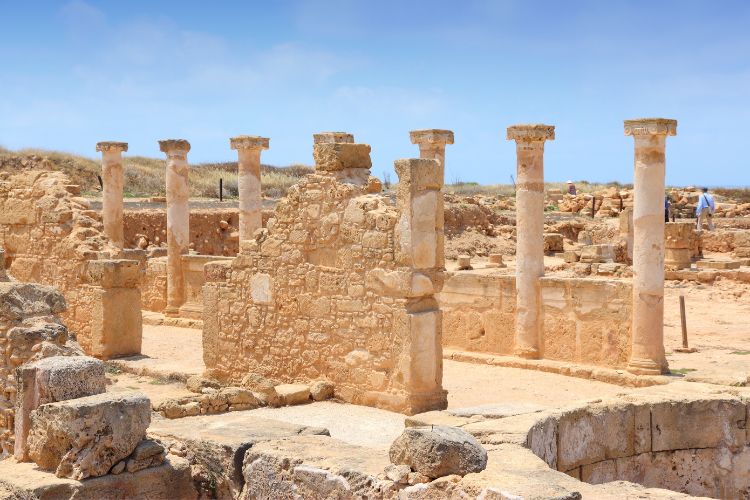
Paphos is popular for two things: Cypriot wine and beaches. Weave through the hills of Paphos, stopping at a number of family-owned wineries for tours and tasting. Then, spend the afternoon at the famous Baths of Aphrodite beach, where swimming in these waters is rumored to prolong your youth. Or, do a wine tour with Cyprus Taste Tours, which takes you to boutique wineries located in Troodos mountains.
Languedoc, France
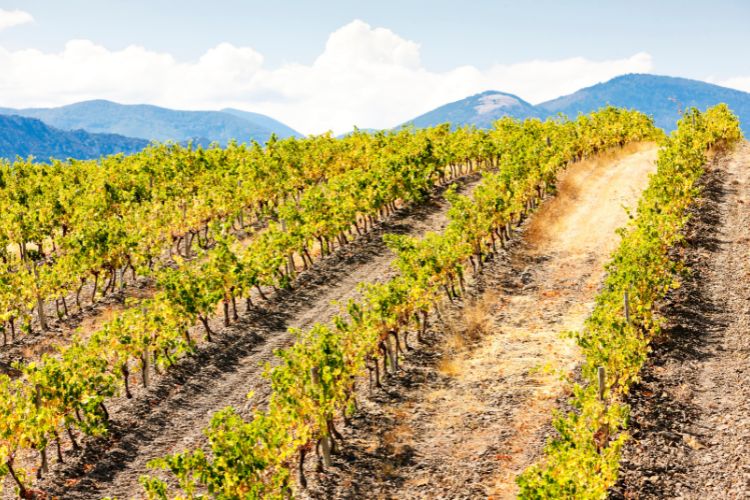
Languedoc is the largest producer of organic wines in France. And the region sits along the southeastern coast of the country, meaning there are endless options for sandy beaches, though we love the breezy dunes of Espiguette. Many of the wineries also feature spots to stay overnight, such as Domaine Saint Hilaire, where you can wine taste and sleep in a renovated manor house — and even visit the estate’s art gallery.
RELATED: Here’s Where To Take a Beach Vacation in Europe
We could honestly go on all day about wine regions by the sea and never feel like we’ve covered enough. That being said, we had to throw two other European regional suggestions at you for visitation consideration.
Bolgheri, Tuscany
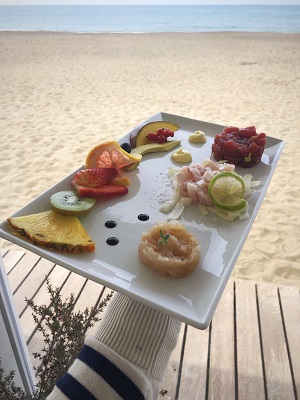
Bolgheri is a relatively small but special sub-region of Italy’s Tuscany wine region. It’s here that the first Super Tuscan wine was concocted, breaking away from the traditional grapes of the region and shifting more into Bordeaux-style blends. Drive amongst the vines and tall cypress trees at a slow pace (there’s actually a 5km-long avenue lined with cypress trees called Viale dei Cipressi) as you make your way to the Etruscan coast, where you’ll be greeted with the enchanting scent of the sea, local seafood, and of course, local wine.
Basque Country, Spain

Nestled along the rugged Atlantic coastline in Spain, an area renowned for its rich cultural heritage, unique language, and exquisite culinary scene, Basque Country’s dramatic landscape, characterized by steep hillsides and dramatic cliffs, creates a stunning backdrop for the vineyards that produce distinctive Txakoli wines.
Txakoli wines are predominantly white, made mainly from the indigenous Hondarribi Zuri grape variety, although some rosé and red wines are also produced from the Hondarribi Beltza grape variety. The region’s cool, damp climate, heavily influenced by the Atlantic Ocean, contributes to the wines’ fresh and vibrant character.
RELATED: Basque Country Wine Region: Wine Tasting Travel Guide & Itinerary
Hondarribi Zuri, the primary grape variety in Txakoli wines, is known for its high acidity and aromatic profile. The wines made from this grape are typically light-bodied, slightly effervescent, and low in alcohol content, usually ranging between 9% and 12%. Flavors and aromas include citrus, green apple, and subtle floral notes, often accompanied by a distinct saline or mineral undertone, a reflection of the region’s maritime influence.
Txakoli wines are traditionally bottled with a slight spritz, adding a refreshing, effervescent quality that has become a signature characteristic of the style. This slight fizziness is achieved by fermenting the wine in stainless steel tanks and bottling it under pressure, capturing the natural carbon dioxide produced during fermentation.
The crisp, refreshing nature of Txakoli wines makes them an ideal pairing for the local seafood dishes commonly found in the Basque Country, such as grilled fish, fresh oysters, and pintxos (small bites served on skewers or bread). The wine’s natural acidity and slight effervescence help to cleanse the palate, enhancing the flavors of the region’s celebrated cuisine.
As the popularity of Txakoli wines continues to grow, both domestically and internationally, the Basque Country’s wine region is gaining recognition for its unique, vibrant wines that truly capture the essence of their coastal terroir.
Rias Baixas, Spain

Last but not least, white wine enthusiasts who love seafood would be remiss if they didn’t consider adding Rias Baixas to their seaside wine region list. It’s also within a short drive of Basque Country, which is currentely considered is an autonomous community in northern Spain. (This is important to note, as the Basque don’t always like to be referred to as Spaniards, keep this in mind when visiting either region).
This crisp region on the north coast of Spain has become famous for its Albariño wines, which pack refreshing acidity, minerality and even hints of salinity on the palate. Rent a car for a few days here while you visit some of the wineries, and be sure to dine in the town of Cambados, where the types of local seafood, and particularly shellfish is seemingly endless. There’s even a scallop festival you can attend!
Bottom Line
If you love to relax on the beach but also want to explore more of Europe’s wine, cuisine, and culture, there are many different destinations on the continent where you can do it all. This list only encompasses a fraction! Many of Europe’s most popular countries have more than just one or two wine regions, so make sure to think outside the box and consider alternative spots when planning your next combo wine and beach trip to Europe.
If you’re looking for more inspiration, be sure to check out our itineraries page which is updated frequently with wine regions all over the world.
You are reading “Best Wine Regions in Europe to Visit by the Ocean” Back To Top
travel ideas, wine tasting in Europe, best wine regions in Europe: top wine regions to visit this year
If you enjoyed this guide, follow us on Instagram, Twitter and our Facebook Group to interact with other Winetravelers, ask for additional European travel advice, and for travel inspiration around the world.
